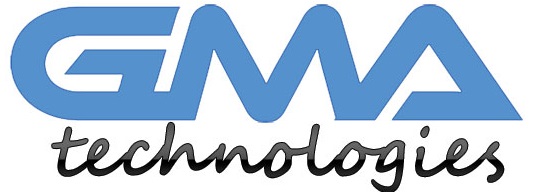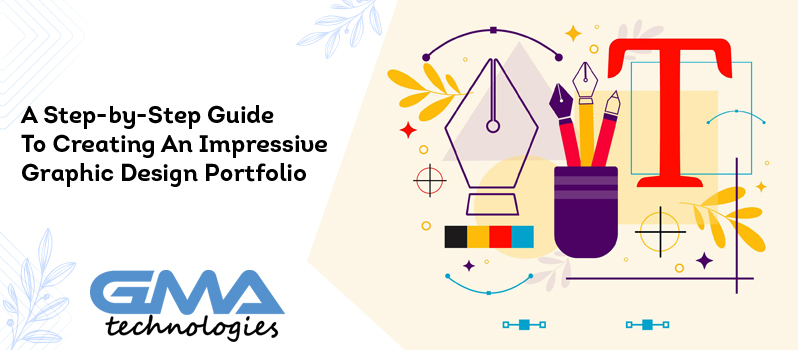We’re often asked how to make a impressive graphic design portfolio, or what a good portfolio should look like, so we put together this article with all the basics you need to know. From figuring out your target audience and submitting examples of work to organizing the layout of your pages, we cover it all! In the end, if you choose to follow our advice, you’ll be able to build a great portfolio that will get clients knocking down your door.
What to Include in Your Graphic Design Portfolio
When creating a portfolio for a graphic design position, be sure to include a range of examples that demonstrate your skills in the field. Include both digital and print designs, as well as any sketches or other preliminary work you may have done. Be sure to showcase your versatility by including examples of different design styles. If you have any experience working with branding or marketing materials, be sure to include those examples as well. Tailor your portfolio to the specific company or position you are applying for, and make sure all of your work is up-to-date and relevant.
Text Styles and Colors
When it comes to text styles and colors, there are a few things you need to keep in mind. First, make sure the fonts you use are easily readable. A good rule of thumb is to use sans-serif fonts for body text and serif fonts for headings. Second, don’t be afraid to experiment with different font sizes and weights to create visual interest. Finally, when it comes to colors, try to stick to a limited palette so that your designs don’t look too busy.
How to Create a Website for Your Portfolio
As a graphic designer, having an online portfolio is essential. Not only does it showcase your skills and work to potential clients, but it also helps you to be found online easily by anyone who is searching for a graphic designer.
Creating a website for your portfolio doesn’t have to be difficult or expensive. In fact, with the right platform and some careful planning, you can create a professional-looking website in just a few hours.
Here’s a step-by-step guide to creating a website for your portfolio:
- Choose a platform: The first step is to choose a platform for your website. We recommend using WordPress because it’s easy to use and there are plenty of themes and plugins available to help you create a professional-looking site. Plus, with WordPress hosting from Bluehost, you can get started for as little as $3.95 per month.
-
Pick a theme: Once you have chosen your platform, it’s time to pick a theme. There are thousands of themes available for WordPress, so take your time browsing through them until you find one that you like. If you’re not sure where to start, we recommend checking out the themes at ThemeForest.net.
-
Install plugins: Once you have chosen and installed your theme, it’s time to install some plugins. Plugins are pieces of software that add extra features and functionality to your website. For example, there are plugins that allow you to create contact forms, add social media buttons, or even sell products on your site.
-
Create your content: Now it’s time to start creating your content. This can include blog posts, project pages, or anything else you want to include on your site. If you’re not sure what to write about, check out our guide to creating content for your website.
-
Launch your site: Once you’re happy with your site, it’s time to launch it and make it live for the world to see. Congratulations! You’ve now created a website for your portfolio.
Creating Visuals with Adobe Photoshop, Illustrator, and Sketch
If you’re hoping to break into the world of graphic design, having a strong portfolio is essential. Your portfolio is a chance to show off your skills and creativity, and it can make or break your chances of landing a job or client.
Creating a standout portfolio doesn’t have to be complicated or expensive. In fact, with the right tools, it can be quite simple – even if you’re just getting started. In this blog post, we’ll walk you through everything you need to know about creating visuals for your portfolio using Adobe Photoshop, Illustrator, and Sketch.
Adobe Photoshop is one of the most widely used graphic design programs out there. If you’re not familiar with Photoshop, don’t worry – we’ll give you a quick overview. Photoshop is primarily used for editing photos and images, but it also has some powerful vector drawing capabilities. With Photoshop, you can create stunning visual effects and graphics that will really make your portfolio stand out.
Illustrator is another widely used graphic design program from Adobe. Unlike Photoshop, Illustrator is primarily used for vector graphics – meaning that it’s perfect for creating things like logos and illustrations. Vector graphics are resolution-independent, so they look great on any screen size or printing material. If you’re looking to add some beautiful illustrations to your portfolio, Illustrator is the way to go.
Finally, Sketch is a newer program that’s quickly becoming popular among designers – especially those who specialize in web and app design. Sketch is vector-based like Illustrator, but it’s specifically designed for digital interfaces. With Sketch, you can easily create high-quality interface designs, wireframes, and more. If you’re interested in pursuing a career in web or app design, Sketch is definitely worth checking out.
Now that you have a general idea of what each program can do, let’s dive into some specifics. Here are some tips for creating visuals with Adobe Photoshop, Illustrator, and Sketch:
- Pick the Right Program for the Job
When you’re creating visuals for your portfolio, it’s important to use the right program for the job. Trying to force a certain program to do something it wasn’t designed to do will only lead to frustration – and subpar results.
Here’s a quick rundown of when to use each program:
Photoshop: Use Photoshop when you need to edit photos or images, or when you want to create pixel-based graphics (like website headers or social media images). Photoshop is also a great choice for creating mockups of digital products like websites and apps.
Illustrator: Use Illustrator when you need to create vector graphics like logos, illustrations, or icons . Illustrator is also a good choice for creating infographics, as it makes it easy to add and edit text.
Sketch: Use Sketch when you need to create interface designs or wireframes. Sketch is also a good choice for creating website and app prototypes.
- Start with a Blank Canvas
When you’re first starting out, it can be tempting to use one of the many templates that are available online. While templates can be helpful, they can also limit your creativity. Instead of starting with a template, we recommend starting with a blank canvas. This will give you the freedom to design whatever you want, without being restricted by someone else’s idea of what your portfolio should look like.
- Use High-Quality Assets
If you’re going to include visuals in your portfolio, it’s important to use high-quality assets. This means using high-resolution images (at least 300dpi), vector graphics that have been created in Illustrator or Sketch, and fonts that are easy to read. Using low-quality assets will only make your portfolio look amateurish – so it’s not worth skimping on quality just to save a few dollars.
Graphic Design Portfolio Presentation Tips and Considerations
When it comes to creating an impressive graphic design portfolio, presentation is everything. Here are a few tips and considerations to keep in mind when putting together your portfolio:
- Keep it organized and easy to navigate. Your portfolio should be well organized so that potential employers can easily find the information they are looking for.
-
Make sure your work is presented in the best light possible. Choose high-quality images and make sure your layout is clean and professional.
-
Highlight your best work. Don’t try to include everything you’ve ever created – instead, focus on your strongest pieces that will showcase your skills and abilities.
-
Tailor your portfolio to your audience. If you know who will be viewing your portfolio (e.g., a specific company or type of employer), tailor the content accordingly to make sure it’s relevant to their needs and interests.
-
Keep it up-to-date. Regularly update your portfolio with new projects and developments in your career so that employers can see that you’re keeping up with the latest trends.
Examples of Graphic Design Projects Portfolios
When it comes to creating a graphic design portfolio that is sure to impress, there are a few key elements that you will want to include. To get started, take a look at some examples of stellar portfolios from fellow designers. From there, you can begin to brainstorm what projects you would like to include in your own portfolio.
Some great examples of graphic design portfolios include:
-A collection of your best logo designs
-A showcase of your most successful branding projects
-An array of your strongest web and app interface designs
-A compilation of your most impactful infographics
No matter which route you decide to take, remember that quality is always better than quantity when it comes to portfolios. Rather than filling your portfolio with a bunch of mediocre work, focus on curating a selection of your very best pieces that demonstrate the full extent of your talent and skill as a designer.
Conclusion
If you want to make a great impression on potential employers, clients, or collaborators, then you need to have an impressive graphic design portfolio. Creating a portfolio can be daunting, but if you follow our step-by-step guide, you’ll end up with a professional and polished final product that will showcase your skills and talents in the best possible light. So what are you waiting for? Get started on building your dream portfolio today!

